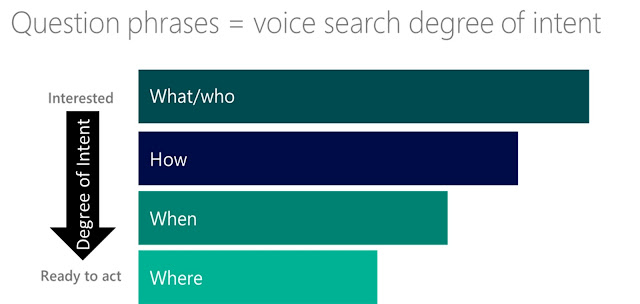
Voice searches on phones and smart speakers are increasing, and some studies estimate 50% of searches will be done via voice search in less than two years.
Optimizing your content for voice search is different than traditional SEO. Users search differently when they’re talking versus typing, but optimizing for voice search still ties in with the goals of digital marketing. Creating content around long-tail keywords, focusing on knowledge-based content, and writing in a way that people commonly speak are all effective methods of voice SEO.
This article is part of the Complete Guide to Improving your Search Engine Optimization.
What’s different about voice search?
Long-tail keywords
People search differently through voice than traditional typed search. Use of keywords and syntax often more closely match natural speech than the fragments we typically associate with internet searches.Take this example: Think about what would you would do if you were looking for a place to go for brunch in Indianapolis. Your search might look like this:
- Typing a search on your phone: “best brunch Indianapolis”
- Asking your smart speaker: “What’s the best place for brunch in Indianapolis?” or even, “Where should we go for brunch today?” And then, you might go on to ask, “What time do they open today?”
Question- and answer-based
Most people use questions when doing voice searches. This makes knowledge-based content more relevant, which is great because knowledge-based content is the foundation of a good inbound marketing strategy in the first place.To cater more specifically to voice SEO, consider content like FAQs and checklists. These types of content are not only scannable and appealing for users that are browsing by device, but they also match the question-and-answer style of most voice search queries.
According to Google, voice searches are 30 times more likely to be action queries than typed searches are.
Local
As the Indianapolis brunch example shows, voice searches often feature a heavily local element. Statistics suggest that 88% of mobile searches are location-based, and that isn’t just for traditional search.Integrating local keywords can help with voice SEO, as can making sure you have plenty of (good) online reviews. Consider implementing a rating system on your own site, and monitor your reviews at websites like Google, Facebook, and Yelp.
How artificial intelligence assistants return results
Not all features of smart speakers and AI assistants can be optimized for search or monetized. Commands like, “Alexa, add bananas to my grocery list,” or “Hey Google, turn off the living room light,” don’t provide much opportunity for marketers.The commands or inquiries that do are the ones that fall into the “local guide” or “facts and information” categories. That’s why focusing on knowledge-based content and including local keywords (if relevant) will optimize your content’s performance in voice search.
Featured snippets—not search results
When you type a search query in Google, you are given a list of results that you can read and choose from. When you ask an AI assistant a question, it typically gives you only one answer. By that logic, it’s actually only the #1 ranked result that gets any attention.That #1 result is presented as a featured snippet. The AI assistant reads or presents the snippet as an answer to the question that was asked. These snippets are pulled from search results, and SEO is what determines what appears in that top spot.
Different brands use different search engines
The big players in the smart speaker and AI assistant market are Google, Apple (Siri), Amazon (Alexa), and Microsoft (Cortana). Google and Apple both use Google as their search engine, and Amazon and Microsoft use Bing.You’re probably optimizing your content for Google, but are you optimizing for Bing? The Amazon Echo was Amazon’s top-selling product during the 2017 holiday season, so there are a lot of people using Bing for voice search, too. While there are many similarities between optimization for different search engines (like creating knowledge-rich, quality content), Bing does have some differences that are worth noting.
Voice search and the buyer journey
We’ve investigated how voice search differs from a traditional internet search and given some tips for voice SEO. But, what does voice search look like across the rest of the digital marketing landscape? This graphic from Campaign shows that voice search and the buyer journey are interlinked.
For example, if someone asks, “What’s the difference between laminate and hardwood flooring?” they are probably just starting out on the buyer journey. But if they ask, “Where can I buy Armstrong hardwood in Indianapolis?” or “What are Kermans Flooring’s hours today?” they are much closer to the point of sale.
Voice SEO differs from traditional SEO, but it still supports your overall digital marketing strategy. Creating knowledge-rich content that reads in a natural, conversational tone isn’t only excellent content marketing, but it’s also optimized for voice search.
Keeping in mind the differences between voice and traditional search will help you create content that will appear in voice search results.
Need help with your digital marketing strategy? Talk to us
You may also like:
